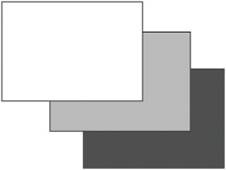Making the Best Source Images
A great final HDR image begins with the successful image capture of a photographically interesting scene that challenges modern camera sensor technology.
The power of HDR imaging is that it can overcome the dynamic range limitations of digital cameras to capture tonal detail across a much greater exposure range by taking a series of differently exposed frames of the same scene. If you've ever shot an interior scene with glowing white blown-out windows, but wished to capture the world outside that room as well, HDR imaging can help. If you've ever had to choose between capturing detail in a backlit skyscraper and completely losing the sky, or conversely, been forced to silhouette the skyscraper to show the dramatic clouds in the sky, HDR imaging can help.
The real strength of HDR imaging is the ability to overcome these low dynamic range limitations. In scenes without extreme exposure differences between shadows and highlights, HDR imaging may not be necessary. But if you find yourself in a shooting situation where it is simply not possible to capture good image detail throughout the entire tonal range in one image, HDR imaging can make it possible.

Figure 4. This symbol means Automatic Exposure Bracketing on almost every modern button-based camera. In menus, it is usually abbreviated as AEB.
Because HDR imaging involves multiple captures of the same scene, ...
Get HDR: An Introduction to High Dynamic Range Photography now with the O’Reilly learning platform.
O’Reilly members experience books, live events, courses curated by job role, and more from O’Reilly and nearly 200 top publishers.

